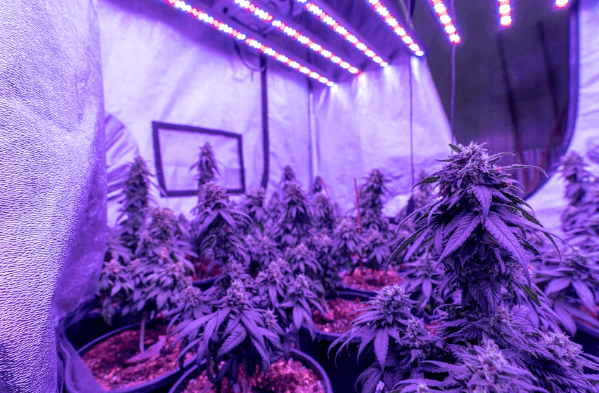Marijuana, also known as cannabis, has a long and rich history that dates back thousands of years. The use of marijuana for medicinal and wellness purposes can be traced back to ancient civilizations such as the Chinese, Indian, and Egyptian cultures. In ancient China, marijuana was used for its medicinal properties as early as 2737 BCE, where it was recommended for a variety of ailments, including rheumatism and malaria. Similarly, in ancient India, cannabis was used in religious ceremonies and for its therapeutic effects, as documented in the sacred text Atharvaveda. The ancient Egyptians also utilized marijuana for medicinal purposes, as evidenced by the discovery of cannabis pollen in the tomb of Pharaoh Ramesses.
Fast forward to modern times, and marijuana has become a widely debated and controversial topic. In the 20th century, marijuana was criminalized in many parts of the world due to its psychoactive effects and potential for abuse. However, in recent years, there has been a shift in public perception and legislation surrounding marijuana, with many countries and states legalizing its use for medicinal and recreational purposes. This shift has sparked renewed interest in the wellness benefits of marijuana, leading to a resurgence in research and exploration of its potential therapeutic applications.
Understanding the Science Behind Marijuana’s Wellness Benefits
The wellness benefits of marijuana are attributed to its complex chemical makeup, which includes over 100 different cannabinoids. The two most well-known cannabinoids are tetrahydrocannabinol (THC) and cannabidiol (CBD), each of which has unique effects on the body. THC is the primary psychoactive compound in marijuana, responsible for the “high” that is often associated with cannabis use. On the other hand, CBD is non-psychoactive and has been the focus of much research for its potential therapeutic properties.
Both THC and CBD interact with the body’s endocannabinoid system, a complex network of receptors and neurotransmitters that play a crucial role in regulating various physiological processes such as mood, appetite, pain sensation, and immune function. By modulating the endocannabinoid system, marijuana can exert a wide range of wellness benefits, including pain relief, stress reduction, and anti-inflammatory effects.
Research has shown that marijuana may be effective in managing chronic pain, neuropathic pain, and pain associated with conditions such as multiple sclerosis and arthritis. Additionally, CBD has been studied for its potential anti-anxiety and antidepressant effects, making it a promising option for individuals seeking natural remedies for mental health conditions. Furthermore, marijuana has shown potential in alleviating symptoms of nausea and vomiting in cancer patients undergoing chemotherapy, as well as improving appetite and sleep in individuals with HIV/AIDS. Many people are turning to weed delivery services for convenient access to these benefits.
Exploring Different Ways to Consume Marijuana for Wellness
There are various methods of consuming marijuana for wellness purposes, each with its own unique benefits and considerations. Smoking is one of the most common methods of marijuana consumption, where the dried flowers or buds of the cannabis plant are rolled into a joint or smoked through a pipe or bong. Smoking provides rapid onset of effects, making it a popular choice for individuals seeking immediate relief from symptoms such as pain or anxiety. However, smoking may not be suitable for individuals with respiratory issues or those concerned about the potential health risks associated with inhaling smoke.
Another popular method of consuming marijuana is through vaporization, which involves heating the cannabis plant material or concentrates to a temperature that releases the active compounds as a vapor. Vaporization is often preferred over smoking as it eliminates the combustion of plant material, reducing the intake of harmful byproducts such as tar and carbon monoxide. This method allows for precise control over dosage and provides a more discreet and convenient way to consume marijuana.
In addition to smoking and vaporization, marijuana can also be consumed orally through edibles such as cookies, brownies, or gummies. Edibles offer a longer-lasting and more potent effect compared to smoking or vaporization due to the way cannabinoids are metabolized in the digestive system. However, it is important to exercise caution when consuming edibles, as they can take longer to take effect and may lead to unintentional overconsumption if not dosed carefully.
Navigating the Legalities of Marijuana Use for Wellness
The legal landscape surrounding marijuana use for wellness varies widely across different countries and regions. In some places, marijuana is fully legalized for both medicinal and recreational use, while in others, it remains strictly prohibited. Many countries have adopted a more progressive approach to marijuana legalization in recent years, recognizing its potential therapeutic benefits and moving towards decriminalization or regulation of its use.
In countries where marijuana is legal for medicinal purposes, individuals may be required to obtain a medical marijuana card or prescription from a qualified healthcare provider in order to access cannabis products from licensed dispensaries. These products are often subject to strict quality control measures to ensure safety and potency. In contrast, in regions where recreational marijuana is legal, individuals can purchase cannabis products from licensed retailers without the need for a medical recommendation.
However, it is important to note that even in places where marijuana is legal, there are still regulations and restrictions in place regarding its use. These may include limitations on where marijuana can be consumed, restrictions on driving under the influence of cannabis, and age requirements for purchasing and using marijuana products. It is essential for individuals to familiarize themselves with the specific laws and regulations governing marijuana use in their area to ensure compliance and responsible consumption.
The Role of Marijuana in Managing Pain and Chronic Illness
One of the most well-established wellness benefits of marijuana is its ability to alleviate pain and improve the quality of life for individuals with chronic illnesses. Chronic pain affects millions of people worldwide and can have a profound impact on physical functioning, mental health, and overall well-being. Traditional pain management approaches such as opioids are associated with significant side effects and risk of addiction, leading many individuals to seek alternative treatments such as medical marijuana.
Research has shown that cannabinoids in marijuana have analgesic properties that can help reduce pain intensity and improve pain tolerance. THC, in particular, has been found to activate the body’s natural pain-relief system by binding to cannabinoid receptors in the brain and spinal cord. This can result in a reduction in pain signals sent to the brain, leading to relief from various types of chronic pain, including neuropathic pain, fibromyalgia, and arthritis.
In addition to its direct pain-relieving effects, marijuana may also help address the underlying causes of chronic pain by reducing inflammation and modulating immune responses. CBD, in particular, has been studied for its anti-inflammatory properties and potential to alleviate symptoms associated with conditions such as rheumatoid arthritis and inflammatory bowel disease. By targeting both the symptoms and underlying mechanisms of chronic pain, marijuana offers a holistic approach to pain management that may be beneficial for individuals seeking natural and effective solutions.
How Marijuana Can Support Mental Health and Emotional Wellbeing
In addition to its physical wellness benefits, marijuana has shown promise in supporting mental health and emotional well-being. Mental health conditions such as anxiety, depression, PTSD, and insomnia are highly prevalent and can have a profound impact on an individual’s quality of life. Conventional treatments for these conditions often come with side effects and limitations, leading many individuals to explore alternative options such as medical marijuana.
CBD, in particular, has garnered attention for its anxiolytic and antidepressant effects, which may offer relief for individuals struggling with anxiety disorders or mood disturbances. Research suggests that CBD interacts with serotonin receptors in the brain, a key neurotransmitter involved in regulating mood and emotional responses. By modulating serotonin levels, CBD may help alleviate symptoms of anxiety and depression without the sedating or addictive properties associated with conventional medications.
Furthermore, THC has been studied for its potential to improve sleep quality and reduce nightmares in individuals with PTSD. Sleep disturbances are a common symptom of PTSD and can exacerbate other mental health issues such as anxiety and depression. By promoting relaxation and reducing hyperarousal during sleep, THC may offer relief for individuals struggling with PTSD-related sleep disturbances.
It is important to note that while marijuana shows promise in supporting mental health, individual responses to cannabis can vary widely. Some individuals may experience heightened anxiety or paranoia with THC-dominant strains, while others may find relief from these symptoms with CBD-rich products. As with any wellness intervention, it is essential for individuals to work closely with healthcare providers to determine the most appropriate treatment plan based on their unique needs and preferences.
Tips for Incorporating Marijuana into a Holistic Wellness Routine
When incorporating marijuana into a holistic wellness routine, it is important to approach its use mindfully and responsibly. Here are some tips for integrating marijuana into a wellness regimen:
1. Consult with a healthcare provider: Before using marijuana for wellness purposes, it is important to consult with a qualified healthcare provider who can provide personalized guidance based on individual health needs and goals.
2. Start low and go slow: When trying marijuana for the first time or exploring new products, it is advisable to start with a low dose and gradually increase as needed. This approach allows individuals to gauge their tolerance and response to different strains or formulations.
3. Consider different delivery methods: There are various ways to consume marijuana, each with its own unique effects and considerations. Individuals may explore smoking, vaporization, edibles, tinctures, topicals, or sublingual oils to find the most suitable method for their needs.
4. Keep track of effects: Keeping a journal or log of marijuana use can help individuals track their experiences, including dosage, strain type, effects on symptoms, and any side effects or adverse reactions.
5. Prioritize safety: It is important to store marijuana products securely away from children or pets and to avoid driving or operating heavy machinery while under the influence of cannabis.
6. Combine with other wellness practices: Marijuana can complement other wellness practices such as mindfulness meditation, yoga, acupuncture, or massage therapy to create a comprehensive approach to health and wellbeing.
7. Stay informed: As research on marijuana continues to evolve, staying informed about new developments and evidence-based recommendations can help individuals make informed choices about their wellness journey.
In conclusion, the history of marijuana spans millennia and encompasses diverse cultural traditions that have recognized its therapeutic potential since ancient times. Understanding the science behind marijuana’s wellness benefits sheds light on its complex chemical makeup and interactions with the body’s endocannabinoid system. Exploring different ways to consume marijuana for wellness highlights the versatility of cannabis products and their potential applications for various health concerns. Navigating the legalities of marijuana use for wellness underscores the importance of staying informed about local regulations and compliance measures when incorporating cannabis into a holistic wellness routine. The role of marijuana in managing pain and chronic illness emphasizes its potential as an alternative treatment option for individuals seeking natural remedies for long-term health conditions. Furthermore, exploring how marijuana can support mental health and emotional well-being underscores its potential in addressing prevalent mental health concerns such as anxiety disorders, depression, PTSD, and insomnia.
By incorporating these tips into a holistic wellness routine that includes mindfulness practices such as meditation or yoga alongside other complementary therapies like acupuncture or massage therapy can help individuals create a comprehensive approach to health that integrates marijuana into their overall wellness journey mindfully and responsibly. This approach can help individuals manage stress, anxiety, and chronic pain while also promoting overall well-being. It’s important for individuals to consult with healthcare professionals and to be mindful of their own unique needs and reactions to marijuana in order to use it safely and effectively as part of their holistic wellness routine.


